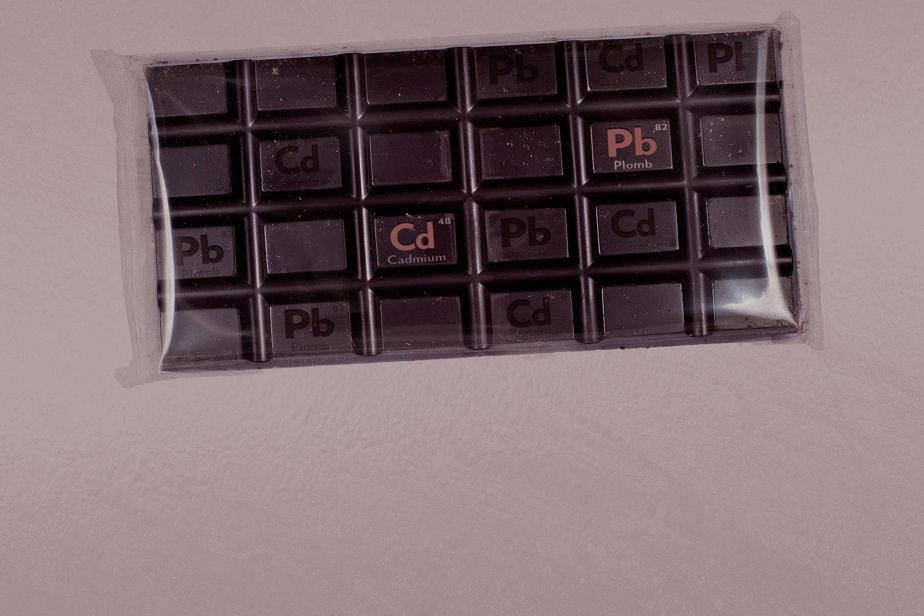Studies show that some dark chocolates contain a lot of cadmium and lead. Should we be worried?
An ounce
Last December, the verdict was in: 23 of the 28 most common brands of dark chocolate in the United States had levels of cadmium – a toxic metal – above California standards. These are the strictest standards, according to an analysis by the American group Consumer Reports.

PHOTO FROM UNIVERSITY OF CONNECTICUT WEBSITE
Melissa Melough during her PhD at the University of Connecticut
“Dark chocolate stands out as one of the foods with the most cadmium, when you consider normal consumption,” says Melissa Melough, from the University of Delaware, who published in 2018 in the journal Nutrients an estimate of dietary sources of cadmium in the United States. “The FDA in 2018 estimated that one ounce (just under 30g) of dark chocolate contained an average of 7.6 micrograms of cadmium, while the California limit is 4.1 micrograms per day. The Delaware epidemiologist calculated in 2018 that the average American ingests five micrograms of cadmium a day with meals.
The Consumer Reports study also reported that 5 of the 28 dark chocolate bars studied exceeded lead standards. But according to Mme Melough, there is a lot of variability in exposure to lead, due to paints that contained it until the late 1970s. The limit for lead in California is 0.5 micrograms per day. A study published in 2020 in the journal Food Research International estimated that a normal diet contains 10 micrograms of lead per day.
Dangers
The dangers of cadmium and lead mainly affect children, and by extension pregnant women, because their brains and organs are developing, according to Martin Laliberté, emergency physician and toxicologist at the McGill University Health Center (MUHC). “I wouldn’t worry parents about the chocolate thing, though. There’s cadmium and lead in other foods,” says Dr.r Freedom. Mme Melough points out that milk chocolate contains significantly less cadmium. “It’s the cocoa powder that contains it,” she says. The FDA also estimated that the two foods containing the most were cocoa and baking powder. But obviously, we consume very little per day. »

PHOTO VINCENZO PINTO, AGENCE FRANCE-PRESSE ARCHIVES
Milk chocolate contains much less cadmium than dark chocolate.
Cadmium-related health problems – kidney and lung problems – were first observed in industrial workers, with blood levels 50 to 200 times higher than the average population. A study published in 2010 in the journal BMC Public Healthwhich analyzed data from 5,000 Americans followed for 20 years, noted, however, that kidney problems could occur with a cadmium ingestion rate barely two to four times higher than the population average. Cadmium is converted in the liver into a molecule that damages the kidney tubules.
In particular, lead exposure during early childhood has been linked to problems with brain development.
Chocolate compared to…
Curiously, vegetarians eat twice as much cadmium as the average population, because nuts and cereals contain more of it than the average food, according to a 2009 report from the European Food Safety Authority (EFSA). “Nuts and cereals are not among the foods that contain the most cadmium, but it all comes down to the level of consumption, says Ms.me Melough. For example, you would have to eat two-thirds of a cup of spinach a day to exceed the California limit, or five tablespoons of peanut butter. »
The causes

PHOTO GETTY IMAGES
Cocoa nibs are sometimes exposed to cadmium and lead during drying.
Cadmium and lead in food come from soil and air. “There is more cadmium in the soils in some areas and the cocoa trees absorb this cadmium along with other soil nutrients,” says Ms.me Melough. Cocoa beans are also air-dried, exposing them to cadmium and lead dust from traffic and industries. A study published in 2020 in the dayalways Agricultural and Food Chemistry by researchers from the American regulatory agency FDA noted that cocoa from certain regions of Latin America contains more cadmium and lead than that from Africa, responsible for 75% of world production.
Parries
The 2020 FDA study mentioned that pilot projects in Trinidad and Tobago were successful in reducing the amount of cadmium in cocoa by increasing the pH of soils with lime (making them less acidic), because the cadmium is less well absorbed by cocoa trees above a pH of 6. The same pilot projects mixed charcoal with the soils, because it binds to the cadmium, making it unavailable to the trees. Another pilot project, in Peru, showed that reducing the use of chemical fertilizers in cocoa plantations reduced the level of cadmium in cocoa. There are several reasons for this: fertilizers contain cadmium and they make the soil more acidic. With less fertilizer, cocoa trees grow more slowly, which reduces the absorption of cadmium along with that of other nutrients.
Other standards
The US federal standards, those of Canada and the EFSA offer another approach: dietary cadmium consumption limits are linked to a person’s weight. “It means that the limit is much lower for children than for adults, and for women than for men,” says Ms.me Melough. These limits are 0.8 micrograms per pound of body weight per day in Canada, 0.1 micrograms per pound of body weight per day in the United States (CDC), and 2.5 micrograms per pound of body weight per week. in Europe (EFSA). “For a 130lb person, the US federal limit is slightly higher than California’s. In Europe, the limit is four times higher,” says Ms.me Melough. As for the Canadian cadmium limit, it is ten times higher than the Californian limit.
Learn more
-
- 0.33 micrograms per liter
- Average amount of cadmium in the blood of a Canadian in 2007-2009
Source: Health Canada
- 0.27 micrograms per liter
- Average amount of cadmium in the blood of a Canadian in 2018-2019
Source: Health Canada
-
- 5 times
- Amount of cadmium in the blood of a smoker compared to a non-smoker
Source: Health Canada
